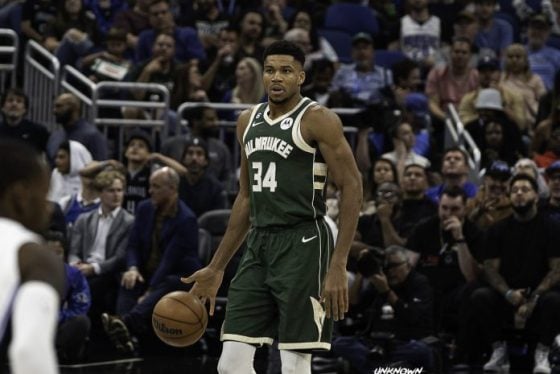Correspondent Vicki L. Friedman delves into Marian Washington’s new autobiography
by Vicki L. Friedman
“I grew up on a bus.”
I thought I heard wrong. Marian Washington was telling me about her early life in a conference call with Ascend Books. I was asking a few questions about her background in hopes of becoming the co-author to her autobiography that was long overdue.
“What was that?”
“I grew up in a bus.”
I spoke to the publisher the next morning and asked what he heard. “It sounded like she said bus,” he admitted. “Might make for a good part of the story.”
“FIERCE: My Fight for Nothing Less” was released on Sept. 6 – available at Amazon and Barnes & Noble, Rally House locations in Lawrence, Kansas, and multiple other outlets.
“The lessons unpacked in this book are incredible,” said Dawn Staley, the Naismith Hall-of-Famer, one of several testimonials in the along with those from Tara VanDerveer, Rebecca Lobo, Carolyn Peck, Venus Lacy, Teresa Edwards, Ann Meyers Drysdale, Donna Lopiano, Brenda VanLengen and Tamecka Dixon.
Lynette Woodard, also in the Naismith Hall of Fame, wrote the Afterword.
Many with even a strong sense of women’s basketball history might only know that Marian Washington coached at the University of Kansas for 31 years and won a lot of games.
Her book is historical text, tracing the story of the woman who broke the color barrier in women’s basketball coaching. The Washington Post in 2022 recognized her for being the Jackie Robinson of women’s basketball coaching, noting in 1973, when hired by Kansas, she was the first Black woman to coach women’s basketball at a Division I school.
One year later, Kansas hired Washington to implement women’s intercollegiate athletics in response to recently passed Title IX legislation. In 1974, she was a Black woman in her 20s in a leadership role in a Midwestern athletic department.
From “FIERCE”:
Before tearing down the walls of inequality, I had to build walls. Literal walls had to be constructed in Allen Fieldhouse for the sake of progress. I had to find space anywhere I could in this building, create something where there was nothing. Could a curtain be put up under this stairwell to stow equipment? Could walls and showerheads be added to this empty corner? Is anyone using this file cabinet?
“This is the space I need to have. Nothing is here. Is there a reason I can’t have this area?”
I made it very difficult for someone to tell me no.
The uniforms the female basketball players used at the time were passed to the softball players after the season. Halftime huddles for women’s basketball were initially held in the public women’s bathroom, Washington shouting to be heard over flushing toilets.

Washington laid the foundation for an athletic program that is today a Division I heavyweight. There wasn’t a women’s track and field team when she arrived. Men’s track was among Kansas’ strongest programs. Washington was determined to offer women an opportunity. When she couldn’t find a coach that inaugural year, she became Kansas’ first women’s track and field coach. That’s in addition to coaching basketball and being an athletic director – and raising a young daughter.
No wonder she was running a few minutes late to pick up a teenager from Wichita who rode the bus to Lawrence for her recruiting visit. That would be Woodard.
Washington was the first Black woman to coach a U.S. women’s basketball team abroad (Jones Cup, 1982) and the first Black coach on an Olympic staff (assistant to VanDerveer, 1996). She fought for USA Basketball to reflect diversity by having representation on each of its coaching staff.
“Her efforts led to a policy that every USA Basketball coaching staff would include a coach of color,” wrote Carol Callan, the women’s national team director in a letter published on Page 251 of the book.
Washington was the first female president of the almost entirely all-male Black Coaches Association. She served two terms.
Learn about her roots from the early chapters to realize what shaped her thinking. The first in her family to go to college, she played on the first team to win a national championship – West Chester State in 1969. She and Colleen Bowser became the first two Black women to integrate a U.S. national team. They were achingly close to the 1972 Olympics when the unthinkable happened.
That’s explained in Chapter X.
Washington’s athletic abilities transcended basketball. She competed three times in the Olympic Trials for track and field – an elite thrower of the shot and discus, despite having no one to truly teach her technique.
Dig back even further to discover that it did indeed all start on a bus. There were houses on Bolmar Street in West Chester, Pennsylvania. Washington didn’t live in one of those with her parents, three sisters and a brother.
She grew up in a bus. One without a bathroom. Without running water. Fighting bedbugs and rats.
Chapter V is titled “The Bus.”
In that chapter, Washington recalls that soft feeling on her feet when she was in someone else’s house. Carpet is pretty cool if you’ve never felt it below you before.
“FIERCE” is inspirational, candid and raw, revealing about a woman who shared little personal detail during her tenure at Kansas.
She had never talked before about what it was like becoming pregnant at 13 and being removed from ninth grade because of that.

Washington, 78, wrote a book because she wanted to tell accurate history from someone who was there. She wants to educate and weave the lessons from the pioneers of the past with the game we know and love today.
Her candor is genuinely inspiring. So is she.
In Staley’s words, “I’m glad she has given us her flowers while we can still smell them.”













